
On 28 Jun 1923, Herman M. Biggs died, an American physician who was New York City’s Public Health Officer and pioneered the use of bacteriological studies in the field of public health for the prevention and control of contagious diseases.
In his article, The New Treatment of Diphtheria, in The Century Magazine (1895), he described the value of a dipheria “anti-toxine” for the public treatment of that disease to reduce its death toll. It seemed entirely probable that through the influence of the anti-toxine on the prevention and cure of diphtheria, the disease could eventually be brought completely under control. His pioneering work helped make that possible.

On 28 Jun 1923, Hermann M. Biggs died, the American physician who pioneered the use of bacteriological studies in the field of public health for the prevention and control of contagious diseases. Today's book pick is: Childhood's Deadly Scourge: The Campaign to Control Diphtheria in New York City, 1880-1930, by Evelynn Maxine Hammonds, who describes diphtheria, the highly feared disease in the nineteenth and early twentieth centuries in the United States. In New York City alone, thousands of cases were reported each year, with large numbers of deaths. Physicians and public health experts viewed diphtheria as one of the most difficult to treat and control of all childhood diseases. Due to work to which Biggs was an early contributor, by 1930, the successful immunization of thousands of preschool- and school-aged children made evident for the first time the promise and force of the laboratory in infectious disease control.
It is available from Amazon, typically about New from $26.32. Used from $24.91. (As of earlier time of writing - subject to change.)
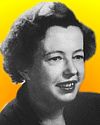 | Mathematics began to seem too much like puzzle solving. Physics is puzzle solving, too, but of puzzles created by nature, not by the mind of man. |
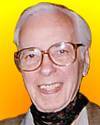 | Man continues to be the only 150 pound nonlinear servomechanism that can be wholly mass-produced by unskilled labor. |
 | Long may Louis de Broglie continue to inspire those who suspect that what is proved by impossibility proofs is lack of imagination. |
| Before you look at today's web page, see if you can answer some of these questions about the events that happened on this day. Some of the names are very familiar. Others will likely stump you. Tickle your curiosity with these questions, then check your answers on today's web page. | |
| Births | |
 | F. Sherwood Rowland, born 28 Jun 1927, is an American chemist who shared the 1995 Nobel Prize for Chemistry with chemists Mario Molina and Paul Crutzen for research on the depletion of the Earth's ozone layer. What was discovered as a culprit for ozone depletion? |
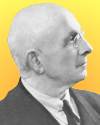 | Alexis Carrel, born 28 Jun 1873, was a French scientist, surgeon, biologist, who received the 1912 Nobel Prize for Physiology or Medicine for developing a method of suturing blood vessels. He also did notable work on the problem of keeping tissue alive after removal from a living organism. The most famous example was a piece of tissue from the heart of a chicken embryo, which was kept for a certain number of years from 1912 until the experiment was deliberately ended. How long was the chicken embryo tissue kept alive? |
| Deaths | |
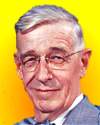 | Vannevar Bush (1890-1974) was an American electrical engineer, who at the age of 35 developed the differential analyzer, (1925) the world's first analog computer. It was capable of solving differential equations. This machine filled a room. What size room was used for this machine? |
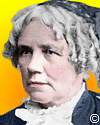 | On 28 Jun 1889, a certain lady died who was the first American professional woman astronomer. While pursuing an amateur interest, on 1 Oct 1847, she gained fame from the observation of a comet which she was first to report. She was also the first female member of the American Association of Arts and Sciences. Can you name this astronomer? |
| Events | |
 | In 1992, xenotransplant surgery by Dr John Fung and colleagues transplanted an animal’s liver into a 35-year-old man dying from hepatitis B. The operation was conducted at the University of Pittsburgh Medical Center. The patient was the first recipient of an animal liver xenotransplant. He lived ten more weeks, but died from a brain hemorrhage. What kind of animal provided the liver? |
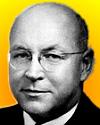 | On 28 Jun of a certain year, the first virus in crystalline form was reported. Professor Wendell Stanley later received a Nobel Prize in Chemistry for his work on the tobacco mosaic virus, which he crystallized. The demonstration of the molecular properties of the virus gave impetus to a new research approach in virology: the study of viruses as large molecules. This was a departure from the predominant view of viruses as infectious agents causing disease. In which decade was the first crystalline form of a virus reported? |
 | On 28 Jun 1958, the world’s longest suspension bridge at that time, was dedicated. It had been open to traffic since the previous November. Fulfilling a 70 year dream, the bridge provided an 8 km (5 mile) link between Michigan’s upper and lower peninsulas, reducing travel time from about 2 hours to just 10 minutes. Which bridge was this? |
Fast answers for the previous newsletter for June 27: the influence exercised by various parts of the embryo that directs the development of groups of cells into particular tissues and organs • the discovery of Neptune • birds • funds in his will for the founding of the Smithsonian Institution • 14 • the decade including the year 1954 • magnesium.
 If you enjoy this newsletter, the website, or wish to offer encouragement or ideas, please send feedback by using your mail reader Reply button.
If you enjoy this newsletter, the website, or wish to offer encouragement or ideas, please send feedback by using your mail reader Reply button. Your click on a Facebook, StumbleUpon, or other social button on the site webpages is also a welcome sign of appreciation. Thank you for using them.
© This newsletter is copyright 2020 by todayinsci.com. Please respect the Webmaster's wishes and do not put copies online of the Newsletter — or any Today in Science History webpage. (If you already have done so, please remove them. Thank you.) Offline use in education is encouraged such as a printout on a bulletin board, or projected for classroom viewing. Online, descriptive links to our pages are welcomed, as these will provide a reader with the most recent revisions, additions and/or corrections of a webpage. For any other copyright questions, please contact the Webmaster by using your mail reader Reply button.
--
If you do not want to receive any more newsletters, Unsubscribe
To update your preferences and to unsubscribe visit this link
Executive Real Estate Business Class
-
"It was like a man with wings. It wasn't like anything you'd see on TV or in a monster movie." ...
About the publisher
Search This Blog
Blog Archive
-
▼
2021
(585)
-
▼
June
(64)
- On This Day for June 30 - Night of the Long Knives...
- Newsletter for Wednesday 30 June.
- On This Day for June 29 - London's Globe Theatre d...
- Newsletter for Tuesday 29 June.
- On This Day for June 28 - Assassination of Archduk...
- Newsletter for Monday 28 June.
- On This Day for June 27 - Yen made official moneta...
- Newsletter for Sunday 27 June.
- On This Day for June 26 - Opening of CN Tower, Bab...
- Newsletter for Saturday 26 June.
- On This Day for June 25 - Korean War begun, Antoni...
- Newsletter for Friday 25 June.
- On This Day for June 24 - Russia invaded by Napole...
- Newsletter for Thursday 24 June.
- On This Day for June 23 - Battle of Bannockburn, C...
- Newsletter for Wednesday 23 June.
- On This Day for June 22 - Mutiny against Henry Hud...
- Newsletter for Tuesday 22 June.
- On This Day for June 21 - Japanese forces defeated...
- Newsletter for Monday 21 June.
- On This Day for June 20 - Casket Letters found, Ho...
- Newsletter for Sunday 20 June.
- Tonight at 8/7c: Watch ‘Fight the Power’
- On This Day for June 19 - Rosenbergs executed for ...
- Newsletter for Saturday 19 June.
- On This Day for June 18 - War of 1812 begun, Sir P...
- Newsletter for Friday 18 June.
- On This Day for June 17 - Arrest of O.J. Simpson, ...
- Newsletter for Thursday 17 June.
- On This Day for June 16 - First woman in space, Jo...
- Newsletter for Wednesday 16 June.
- On This Day for June 15 - Magna Carta sealed by Ki...
- Newsletter for Tuesday 15 June.
- On This Day for June 14 - First prisoners at Ausch...
- Newsletter for Monday 14 June.
- On This Day for June 13 - Historic meeting between...
- Newsletter for Sunday 13 June.
- On This Day for June 12 - Election of Boris Yeltsi...
- Newsletter for Saturday 12 June.
- Listen Now! Blindspot: Tulsa Burning Podcast
- On This Day for June 11 - Oklahoma City bomber exe...
- Newsletter for Friday 11 June.
- On This Day for June 10 - First “witch” hanged in ...
- Newsletter for Thursday 10 June.
- On This Day for June 9 - Landslide reelection vict...
- Newsletter for Wednesday 9 June.
- On This Day for June 8 - Michelangelo's David inst...
- Newsletter for Tuesday 8 June.
- Action required: Update your HistoryExtra password
- On This Day for June 7 - Lateran Treaty ratified, ...
- Newsletter for Monday 7 June.
- On This Day for June 6 - Normandy Invasion begun, ...
- Newsletter for Sunday 6 June.
- On This Day for June 5 - Start of the Six-Day War,...
- Newsletter for Saturday 5 June.
- On This Day for June 4 - Dunkirk evacuation ended,...
- Newsletter for Friday 4 June.
- Tonight: ‘Alone’ Returns at 9:30/8:30c
- On This Day for June 3 - Pro-democracy protest in ...
- Newsletter for Thursday 3 June.
- On This Day for June 2 - Elizabeth II crowned quee...
- Newsletter for Wednesday 2 June.
- On This Day for June 1 - Debut of CNN, Morgan Free...
- Newsletter for Tuesday 1 June.
-
▼
June
(64)
-
Blogroll
-
About
HistoryFact










0 comments:
Post a Comment